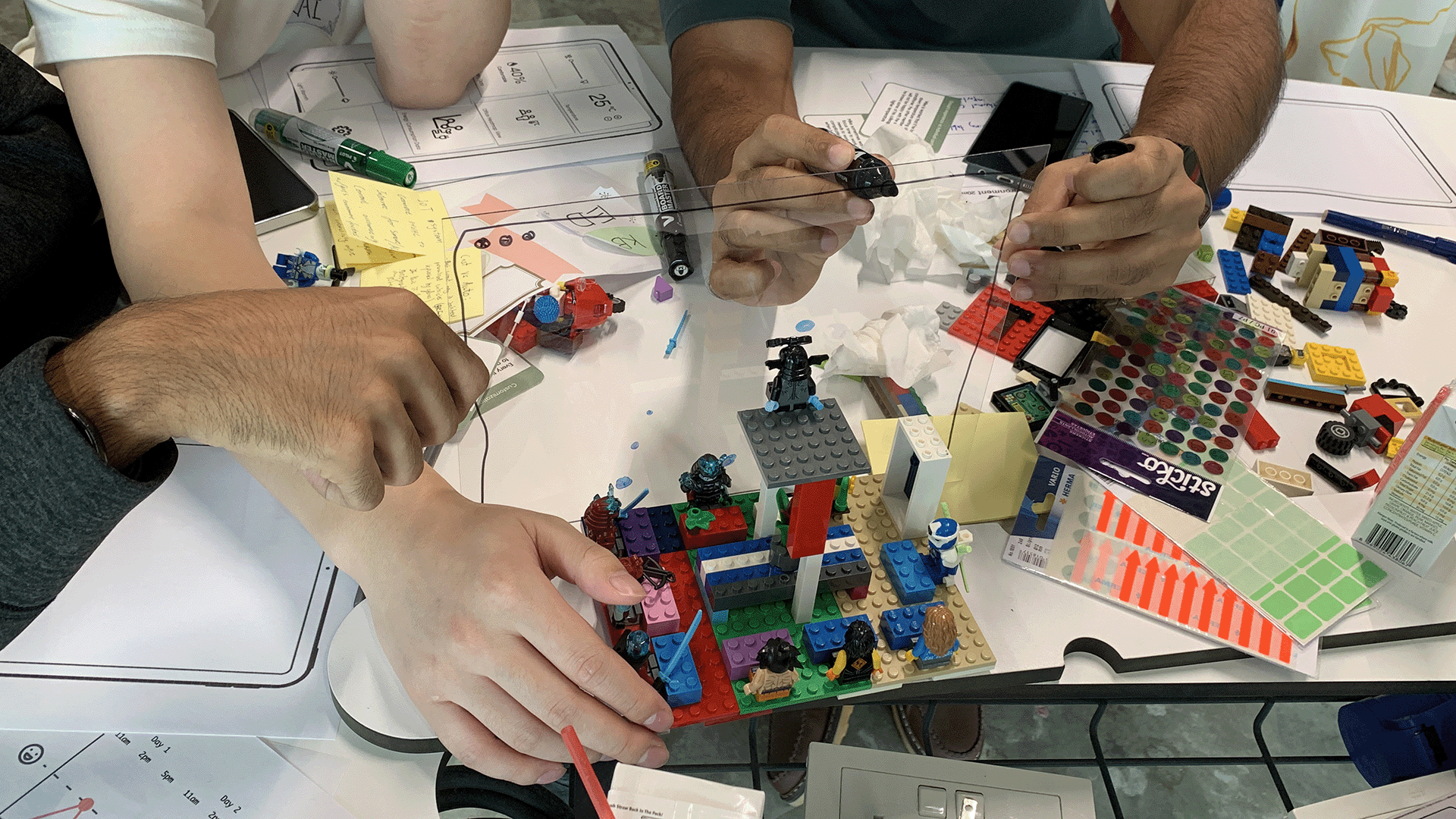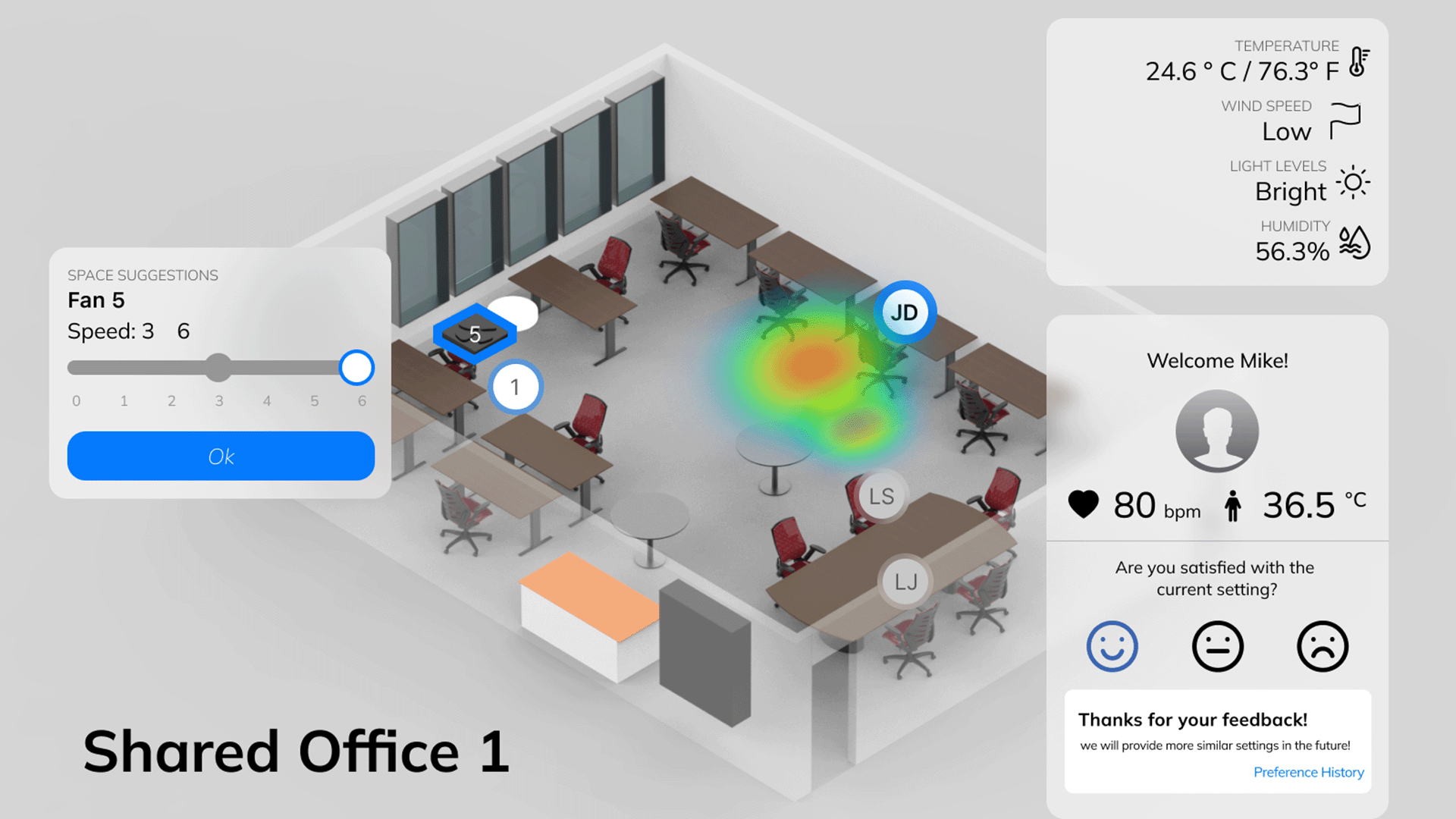
The emergence of digital twin technology has had a transformative impact on the built environment sector, enabling building management to make more informed decisions and deliver significant improvements. By creating detailed virtual representations of physical buildings and facilities, managers are able to simulate and optimise performance, predict potential issues, and enhance overall efficiency.
But Associate Professor Lee Jung-Joo, an expert in human-centered and collaborative design from the Division of Industrial Design, says that until now there has been a key oversight: the exclusion of building occupants from the process.
“Traditionally, occupants have been regarded solely as passive data providers for the digital twin system, without interaction or control over their environments,” she says. “There is often talk about occupants' ‘well-being’, but occupants are not really provided any agency in addressing this - essentially somebody else decides what their well-being is.”
A cross-disciplinary study co-authored by Assoc Prof Lee and colleagues from CDE, published in the journal Building and Environment, aims to change that narrative.

“What we’re proposing is a way to democratise the use of digital twin technology,” she says. “Our aim is to empower occupants by providing them with observability and controllability over building systems and ultimately giving them a more personalised and responsive building experience.”
Cross-disciplinary research
Working with co-researcher Assistant Professor Ali Ghahramani, an expert in building technologies from the Department of Built Environment and director of the Building Robotics Lab at NUS, the study aimed to integrate building technologies with human-centred design, reflecting a broader effort to encourage cross-disciplinary research collaboration between design and engineering.
“In building engineering and built environment studies, the focus has been on technology development,” explains Asst Prof Ghahramani. “Occupants were passive recipients of these technologies without the right or agency to be involved in the development process. By integrating participatory design and human-centred design, we created a process where the actual building occupants are involved in designing and developing these technologies.”
To understand how building occupants currently experience environmental controls and what they would like to see in a more inclusive digital twin (DT) system, the researchers used a participatory design approach. This included surveys, experience sampling methods, and co-design workshops.
“During the workshops, for example, participants used Lego blocks to redesign their office spaces into their ideal layout,” says Assoc Prof Lee. “This collaborative, hands-on approach allowed participants to visualise their ideas and engage more deeply with the design process, providing a creative, fun and interactive way to explore their needs and preferences.”

Using Lego allowed workshop participants to express their ideas visually, facilitated group discussions, and helped them to refine design solutions. “Lego blocks provided a common language for participants to discuss and negotiate their ideas,” says Assoc Prof Lee, “which led to more thoughtful and collaborative design solutions.”
Essential design principles
The study revealed several ways to make occupant-in-the-loop DT systems work well. These include giving users easy-to-use controls, balancing personal comfort with energy use through teamwork, and tackling data privacy issues. Based on these findings, the researchers pinpointed the essential design principles they say should be at the heart of inclusive DT systems:
- Support dynamic contexts: The system should adapt to the building occupants’ changing needs throughout the day.
- Intuitive controls: Interfaces should be user-friendly, avoiding technical jargon and complex navigation.
- Collaborative decision-making: Occupants should be able to balance personal comfort with energy efficiency.
- Data privacy: Transparency and explainability are essential to ensure occupants feel secure in how their data is used.
“Our study shows that involving occupants in the design process can lead to more effective and user-friendly DT systems,” says Asst Prof Ghahramani. “By understanding their experiences and needs, we can create systems that enhance both comfort and sustainability in buildings.”
The researchers say that whilst previous studies have tended to focus solely on the technical aspects of DT development, theirs is one of the first to explore design principles by involving actual building occupants in controlling their environment.

“In design, there are concepts known as data democratisation and data physicalisation,” Assoc Prof Lee explains. “Data democratisation refers to making data accessible to the people who generate it, so they can understand and use it to make informed decisions. Data physicalisation involves representing data in a physical form, making it easier for people to interact with and comprehend.”
Informed decisions
Applying their findings, the researchers have since begun to incorporate these concepts into the development of Digital Twin technology, allowing occupants to access and utilise the data they provide. This empowers occupants to understand their behavioural patterns and make informed decisions about their environment.
The researchers are also exploring various conceptual interfaces for digital twins to better understand user preferences, each catering to different user contexts and activities.
“Users' preferences really depend on the context,” says Assoc Prof Lee. “Sometimes they prefer direct interaction with the system, other times they want AI within the system to recommend actions. It really depends on their activities and physical conditions.”
The researchers say that more inclusive DTs could significantly reshape how we interact with our built environment, leading to building management systems that offer personalised comfort tailored to individual preferences and promote energy-saving behaviours. In turn, this would make buildings more efficient, user-friendly, and adaptable.
Moreover, as digital native generations come of age, the adoption of occupant-centric DT systems is likely to become more widespread, offering significant benefits for both occupants and building managers.
“Buildings are dynamic spaces, inhabited by people with diverse needs,” says Assoc Prof Lee. “By integrating occupant feedback and providing occupants with control over their environment, we believe we can make buildings smarter and more inclusive.”





